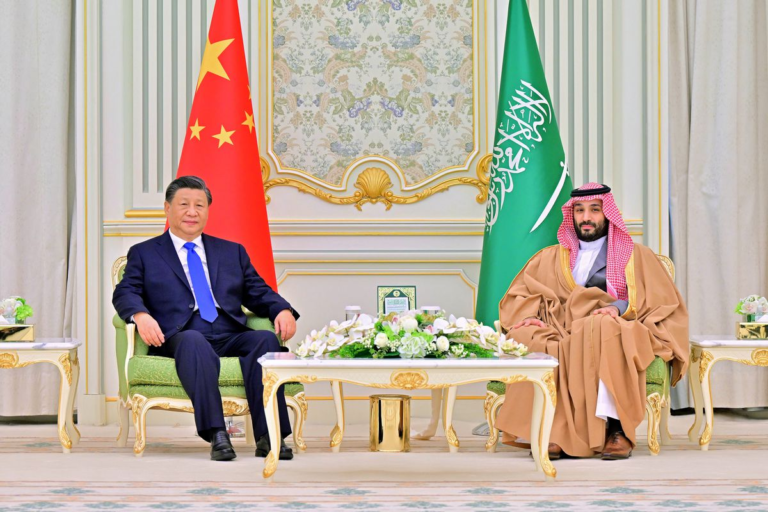WASHINGTON — Australia has two defining military efforts taking shape — the implementation of its Defence Strategic Review at home and the kickoff of a trilateral technology-sharing agreement — that are changing the way the nation’s defense and innovation ecosystems interact.
The Defence Strategic Review, released publicly in April, “is a significant change in posture for Australia” that asks the country to take an asymmetric approach to deterring or winning a conflict in the Pacific, Tanya Monro, the chief defence scientist at the Australian Department of Defence, said Wednesday during a Center for a New American Security event in Washington, D.C.
Instead of focusing on capability gaps, the review instead asks what Australia can invest in that would cause a potential adversary to question its approach or incur more cost, she said.
The review highlighted innovation, science and technology as priorities, with six areas of focus: long-range fires; directed energy; hypersonics; trusted autonomous systems in all domains; quantum technologies, such as quantum-assisted precision navigation and timing and quantum-aided communication tools; and information warfare and automated intelligence systems.
“All of these areas have the potential to disrupt the way our forces operate now, and allow us to leap ahead technologically so that we can do things differently when we work with our allies,” Monro said.
But as part of the defense review, Australia has also shifted to a mindset where “warfighter problems are at the center of what we do, that they’re crafted as problem statements that are technology-agnostic, and then allow us to harness the creativity and good ideas of our whole ecosystem.”
And that approach doesn’t quite line up with the Australia, U.K. and U.S., or AUKUS, Pillar 2 effort that includes working groups devoted specific advanced technology areas rather than warfighting problems.
‘Star shots’
That’s leaving Australia to determine what development priorities it has that it wants to pursue with its closest allies, and which it would like to pursue on its own, to make the most of its limited innovation resources.
In 2020, Australia released a “More, Together” science and technology strategy that included eight “star shots,” or specific warfighting capabilities the service chiefs wanted to have by 2030. The star shots defined the end capability, such as undersea surveillance or resilient satellite constellations, not the technology solution that would get the military there; with this strategy, “our aim has been to align the work done in our universities and in our industry” so these researchers would help address national needs, rather than develop technology for technology’s sake.
Monro said Australia’s innovation sector, unlike in the U.S., largely resides in university labs and with small- and medium-sized companies, rather than large prime contractors that can devote attention to future tech — so Australia determined it was important to focus its limited resources on the most important needs of the military.
:quality(70)/cloudfront-us-east-1.images.arcpublishing.com/archetype/YDSMUONLMJDA3DRW2RC7GXUIBY.jpg)
The Defence Strategic Review doubles down on this, with the creation of an Advanced Strategic Capabilities Accelerator that officially began its work July 1. Monro described this new organization as “quite a bit of [Strategic Capabilities Office] flavor, a lot of [Defense Advanced Research Projects Agency, and a sprinkling of [Defense Innovation Unit].”
ASCA, which will receive $3.4 billion in funding over the next decade, will take tech-agnostic military problems and look to solve them within two or three years.
To get an early win, Monro said, the group put out a call to Australian industry to create a sovereign drone ecosystem, after the government determined it was not safe to use Chinese-made DJI small drones for military or government purposes. Monro said ASCA received more than 250 responses, from companies offering drones to components to software, all of which will be pulled together to help address small unmanned aerial system needs in the Australian Defence Force.
Though this example is one where Australia needed to pursue the effort alone, Monro called out autonomy more broadly as an area where close coordination among the AUKUS allies is critical: she highlighted an early effort the countries already demonstrated, where they not only operated autonomous systems side by side but also passed control of the vehicles among different users.
More information on the Pillar 2 effort and the tech areas it includes will be released this fall. Monro said it would be important to get problem statements, or warfighting requirements, from each of the three militaries to contextualize the need for these advanced tech areas — “and make sure that technology development done under each of those working groups aligns with our warfighters’ highest priority problems. That has been a bit of a forcing function for winnowing down what we do.”
More information on ASCA’s focus areas, too, will be released shortly, Monro said.
“We’re working through the process of which of the problem statements [for ASCA] press an AUKUS button, or another bilateral or multilateral piece. So you can understand there’s a little bit of work between us deciding what’s most important to us, and us deciding what we’re doing alone and what we’re doing together,” she said.
Source : C4ISRNET







